It looks like you're using an Ad Blocker.
Please white-list or disable AboveTopSecret.com in your ad-blocking tool.
Thank you.
Some features of ATS will be disabled while you continue to use an ad-blocker.
share:
I want to look here at the Ziggurat as the basis for Alchemical tradition, this proving to date back to Sumeria. As the basis for this i'll be
quoting research from the specialist Sumerian forum Enenuru
Board...here, attempting to present this in a form in which it can be readily understood by the general reader, and also expanding upon and
clarifying certain aspects.
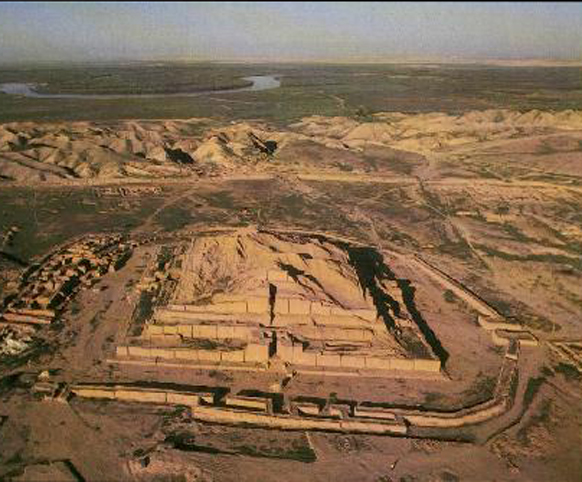
To add to this, in order to understand the ziggurats association with the five planets, Sun and Moon, which will be presented, it should be understood that the ziggurat was based upon a magical mountain seen at the horizon, shortly before sunrise or after sunset, that this is the zodiacal light cone along the ecliptic plane, and thus the planetary objects were seen to track along and through this, in their risings and settings.
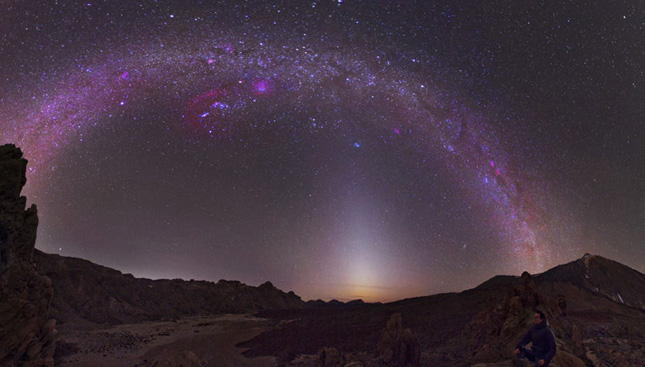
The basic colour scheme for a ziggurat, rendered in glazed brickwork, was along these lines;
These colours are considered to have association with the Heavely bodies, the Deities which represented them, and also natural substances which could symbolize this.

Of course in alchemy there is the inter-relationship and fluctuation between the elements to consider, in terms of the potential for transformation, and likewise it was an aspect of the ziggurat tradition that Inanna or Ishtar would be the personification of this vitalization, and thus dependent upon which crown she was wearing she could represent any or all.
Thus representative of the ziggurat, and the axis of the sacred tree as a whole, and the transformation through levels.
If Venus wears a black crown - Saturn stands in front of her
If Venus wears a white crown - Jupiter stands in front of her
If Venus wears a green crown - Mars stands in front of her
If Venus wears a red crown - Mercury stands in front of her
If Venus wears a rainbow crown - a rainbow lies crosswise in front of her
If Venus wears the Sun's crown - she becomes very bright, Saturn stands in front of her
If Venus wears the Moon's crown - she is very small, Mercury stands in front of her
The choice of colours for the planets is interesting, and seemingly not altogether based upon direct observation, in that Venus as blue is probably indicative of her role as a Sky Goddess ruling by day, as much as any referance to her twilight and nocturnal activities, whilst Saturn as black is perhaps indicitve of his position at the edge of the known cosmos, the vastness of space and time and the unknowable.
A ziggurat needn't have seven levels, but if for example you only had four, that would probably put Venus in the top bunk;
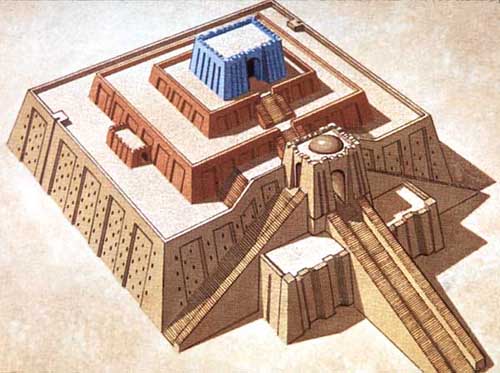
That can also be seen her in terms of her eight pointed star and Nin/lady standard
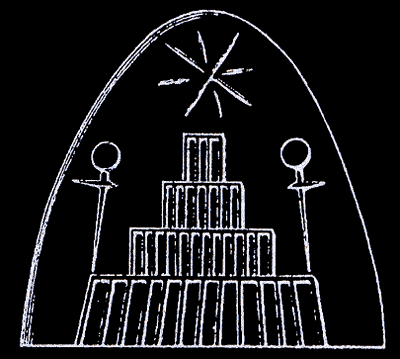
Likewise if you construct a fifth level, this will relate to Mercury/Nebu, and the cult of scribes with their nibs and seals;
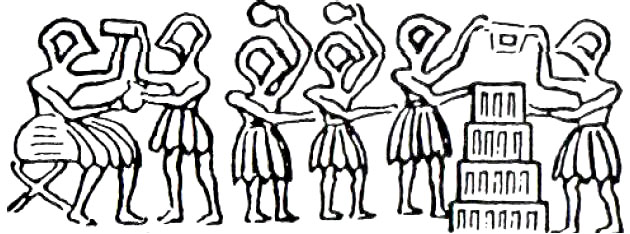
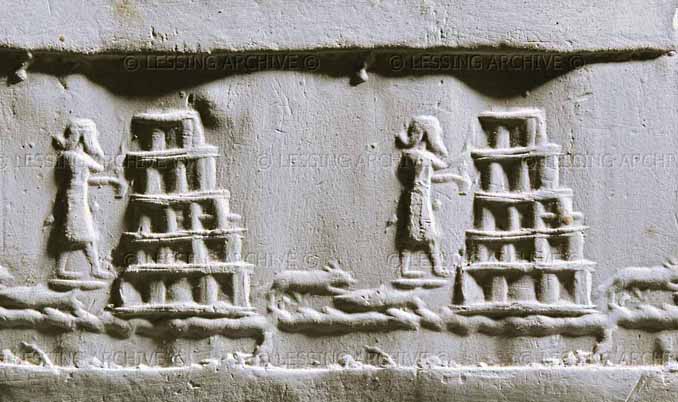
The Sumerian approach then was quite straightforward and not so difficult to understand, after all the ideas originated over 5,000 years ago.
To understand how this tradition then went on to become the Western Alchemic Tradition one will need to trace its path through Mithraism and Hellenistic Gnosticism, and this paper does that wonderfully well;
The Seven Gods of Destinies
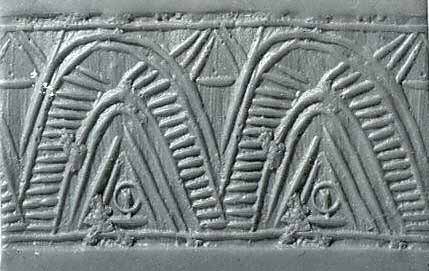
Frankfort (Kingship and the Gods, p. 323) takes the ziggurat to mean: the "mountain," as a symbol of the earth, the Netherworld, or the place of sunrise.

To add to this, in order to understand the ziggurats association with the five planets, Sun and Moon, which will be presented, it should be understood that the ziggurat was based upon a magical mountain seen at the horizon, shortly before sunrise or after sunset, that this is the zodiacal light cone along the ecliptic plane, and thus the planetary objects were seen to track along and through this, in their risings and settings.

The basic colour scheme for a ziggurat, rendered in glazed brickwork, was along these lines;
So, first of all, how should the colour scheme look. Scholars have mostly relied on the account of the Greek Herodotus, who described the battlements of the Median city Ecbatana. The battlements were in this order, from the outer/lower to the inner/higher:
white - black - dark red - blue - light red - silver - gold
The assumption that Mesopotamian towers would have followed this scheme is not without reason. The ziggurat found at Khorsabad has preserved four levels, and possibly originally had seven. The four levels are coloured: white at the bottom, then black, then reddish purple, then blue fourth. Also found were fragments of enamelled bricks that were vermilion, silver-gray, and gold; so if there were an extra three levels then they could have been coloured with these bricks.
As for the ziggurat at Ur, Leonard Woolley had this to say:
The shrine, as we have seen, was bright blue, shining in the sun. The top was red: it was built of large lightly fired bright red bricks and was covered with plaster of the same colour. Below this the whole ziggurat, walls and steps alike, was black, the brickwork covered with a thin coat of bitumen applied with a brush. Below this again was the white-washed columned wall of the court.
These colours are considered to have association with the Heavely bodies, the Deities which represented them, and also natural substances which could symbolize this.

Gold - Sun
Silver - Moon
Light Red - Mercury
Blue - Venus
Dark Red - Mars
Black - Saturn
White - Jupiter
Gold - Sun/Šamaš -------- Gold
Silver - Moon/Sin --------- Silver
Light Red - Mercury/Nabû - Copper?
Blue - Venus/Ištar -------- Lapis
Dark Red - Mars/Nergal --- Red gold?
Black - Saturn/Ninurta ----- Lead
White - Jupiter/Marduk ---- Electrum?
Of course in alchemy there is the inter-relationship and fluctuation between the elements to consider, in terms of the potential for transformation, and likewise it was an aspect of the ziggurat tradition that Inanna or Ishtar would be the personification of this vitalization, and thus dependent upon which crown she was wearing she could represent any or all.
Ištar is described as both a palm tree and as a ziggurat, and a luminescent one at that. According to Parpola (following the Kabbalistic meditation on colours and garments of the sefirot) the seven colours of the ziggurat are the seven garments of Ištar, so that when she descends to the netherworld she undresses, and when she ascends she puts the garments back on. He compares this to the Mithraic ascent of the soul:
the initiate climbs "a ladder with seven gates," the first (of lead) associated with Saturn, the second (of tin) with Venus, the third (of bronze) with Jupiter, the fourth (of iron) with Mercury, the fifth (of electrum) with Mars, the sixth (of silver) with Moon, and the seventh (of gold) with Sun.
Thus representative of the ziggurat, and the axis of the sacred tree as a whole, and the transformation through levels.
If Venus wears a black crown - Saturn stands in front of her
If Venus wears a white crown - Jupiter stands in front of her
If Venus wears a green crown - Mars stands in front of her
If Venus wears a red crown - Mercury stands in front of her
If Venus wears a rainbow crown - a rainbow lies crosswise in front of her
If Venus wears the Sun's crown - she becomes very bright, Saturn stands in front of her
If Venus wears the Moon's crown - she is very small, Mercury stands in front of her
The choice of colours for the planets is interesting, and seemingly not altogether based upon direct observation, in that Venus as blue is probably indicative of her role as a Sky Goddess ruling by day, as much as any referance to her twilight and nocturnal activities, whilst Saturn as black is perhaps indicitve of his position at the edge of the known cosmos, the vastness of space and time and the unknowable.
A ziggurat needn't have seven levels, but if for example you only had four, that would probably put Venus in the top bunk;

That can also be seen her in terms of her eight pointed star and Nin/lady standard

Likewise if you construct a fifth level, this will relate to Mercury/Nebu, and the cult of scribes with their nibs and seals;


The Sumerian approach then was quite straightforward and not so difficult to understand, after all the ideas originated over 5,000 years ago.
To understand how this tradition then went on to become the Western Alchemic Tradition one will need to trace its path through Mithraism and Hellenistic Gnosticism, and this paper does that wonderfully well;
The Seven Gods of Destinies
The mythological concept of the seven gods forming an assembly for decreeing
the destinies for the whole world and writing them down on the Tablet of Destinies formed the backbone of the later practice of horoscopy, which emerged
only in the Achaemenid period. The planets were associated with the gods already in the second millennium BCE Mesopotamian celestial omen texts. The
planetary gods were treated as persons, because the protases of celestial omens
refer to the actions or appearances of the planets and stars not appropriate to
inanimate objects, but rather as anthropomorphic beings with agency and feeling

In the Mesopotamian anti-witchcraft magic series Maqlû, the mountain of the same function appears as the city Zabban, which has two gates—one for the rising of the sun and the second for the setting of the sun. The name of the city can also be read Sapp°n, and be connected with Northwest Semitic Sap°n, biblical •°phôn, the cosmic abode of the deities El and Baal in Ugaritic texts
. In this cosmic locality on the horizon are the cosmic gates through which the sun and other heavenly bodies pass when they enter and leave the sky and return to the netherworld. It is situated on a cosmic shore where its quay and pass (n±biru) serve as entry points through which cosmic travellers and ghosts pass without hindrance from the netherworld into the heavens, and where witches may be temporarily imprisoned
edit on 10-4-2013 by Kantzveldt because: (no reason given)
I am curious if the seven levels can correspond with the 7 Chakras of Hinduism...
Originally posted by Kantzveldt
To add to this, in order to understand the ziggurats association with the five planets, Sun and Moon, which will be presented, it should be understood that the ziggurat was based upon a magical mountain seen at the horizon, shortly before sunrise or after sunset, that this is the zodiacal light cone along the ecliptic plane, and thus the planetary objects were seen to track along and through this, in their risings and settings.
This is reminiscent of the theory that the twin horns, as found on Crete, were representative of twin peaks, utilised for the framing of the horizon for some purpose, a similar symbol also appears in Egyptian hieroglyphs. Given the significance of the mountain, as a haven, as well as representative of the Mother Goddess's womb in regards to water bearing peaks, it makes sense that in areas where water was scarce that they would attempt to emulate, or synthesis mountains for ritual, as well as irrigation purposes. That they also served as 'calendars' would also make sense.
reply to post by KilgoreTrout
It would make sense, sort of, the Egyptian pyramid in many ways had the same function as a ziggurat, as a place of regeneration with regards to the mountain of the horizon, but only with regards to the afterlife cult as a reflection of the natural events played out upon the horizon.
With the Sumerians it served much more of a function in the rituals of every aspect of city life.
It would make sense, sort of, the Egyptian pyramid in many ways had the same function as a ziggurat, as a place of regeneration with regards to the mountain of the horizon, but only with regards to the afterlife cult as a reflection of the natural events played out upon the horizon.
With the Sumerians it served much more of a function in the rituals of every aspect of city life.
reply to post by Kantzveldt
The Sumerians way of life, by contrast to the Egyptians, was defined by chaos and unpredictability from it's water/life source, it would make sense that they would ask more of that symbolism therefore, don't you think?
The Sumerians way of life, by contrast to the Egyptians, was defined by chaos and unpredictability from it's water/life source, it would make sense that they would ask more of that symbolism therefore, don't you think?
reply to post by abeverage
That is the first thing I though Abeverage as it's an uncanny similarity.... Maybe tie that in with "When the third eye becomes one" Transendence or Ascension to another realm or plane maybe??? Good info OP!
Now what I found even weirder and stop me ATSer's if i'm thinking upon this too much..... All the pyramids have been desimated from there original states some are just remnants of the past Ancients that came before us..... Could this be why they are innactive now? The original form of the Ziggurats are destroyed, plainly put..... The batteries are missing....
That is the first thing I though Abeverage as it's an uncanny similarity.... Maybe tie that in with "When the third eye becomes one" Transendence or Ascension to another realm or plane maybe??? Good info OP!
Now what I found even weirder and stop me ATSer's if i'm thinking upon this too much..... All the pyramids have been desimated from there original states some are just remnants of the past Ancients that came before us..... Could this be why they are innactive now? The original form of the Ziggurats are destroyed, plainly put..... The batteries are missing....
Additionally, could this be why we have Alien UFO's from the sea, as there are still unscathed Zig's down below the water? And some Ancients or
Being's are still coming through that way?
Help my mind is being zapped!
Help my mind is being zapped!
reply to post by KilgoreTrout
Maybe, but you don't get the sense of the Gods being so present in the everyday scheme of things in Egypt as you do in Sumeria, apart from say Horus as incarnate through the Pharoah, and to a lesser extent Osiris and Isis in later times.
They're there in their Temples, and understood as occupied with their cosmic Duties, but they just don't seem to have the same hands on approach, they are more distant.
This of course making it possible for suggestions that the Sumerian Deities were indeed actual beings living amongst the Sumerians, such is their seeming close involvement.
reply to post by sulaw
They are inactive now, that is their cultic creation and maintainance has long since ended, because beliefs changed, the principles that made the whole system of thought operative were silenced.
reply to post by AussieAmandaC
Thanks A, there are a few loose ends i'm tying together here, i'm sure you've noticed...
Maybe, but you don't get the sense of the Gods being so present in the everyday scheme of things in Egypt as you do in Sumeria, apart from say Horus as incarnate through the Pharoah, and to a lesser extent Osiris and Isis in later times.
They're there in their Temples, and understood as occupied with their cosmic Duties, but they just don't seem to have the same hands on approach, they are more distant.
This of course making it possible for suggestions that the Sumerian Deities were indeed actual beings living amongst the Sumerians, such is their seeming close involvement.
reply to post by sulaw
They are inactive now, that is their cultic creation and maintainance has long since ended, because beliefs changed, the principles that made the whole system of thought operative were silenced.
reply to post by AussieAmandaC
Thanks A, there are a few loose ends i'm tying together here, i'm sure you've noticed...
edit on 10-4-2013 by Kantzveldt because: (no reason
given)
reply to post by Kantzveldt
Awesome thinking, Kantzveldt, I really enjoyed your thread.
I especially liked this...
It made me think of the color changes that the Prime Material of Alchemy is supposed to experience as it develops. I don't think the order is quite right, but the way that the changes are related to the planets, and so The Gods, if one wishes, usually yields up more data than is apparent at first.
Thanks for sharing your elegant thinking.
Awesome thinking, Kantzveldt, I really enjoyed your thread.
I especially liked this...
If Venus wears a black crown - Saturn stands in front of her
If Venus wears a white crown - Jupiter stands in front of her
If Venus wears a green crown - Mars stands in front of her
If Venus wears a red crown - Mercury stands in front of her
If Venus wears a rainbow crown - a rainbow lies crosswise in front of her
If Venus wears the Sun's crown - she becomes very bright, Saturn stands in front of her
If Venus wears the Moon's crown - she is very small, Mercury stands in front of her
It made me think of the color changes that the Prime Material of Alchemy is supposed to experience as it develops. I don't think the order is quite right, but the way that the changes are related to the planets, and so The Gods, if one wishes, usually yields up more data than is apparent at first.
Thanks for sharing your elegant thinking.
What you have been posting lately has fallen right in line with my research, for the back round of theory and practice that Im aiming for.I just
wanted to say thanks and good work. Although I may disagree with some of what you express, Im inclined to keep it to myself and do my own research, as
to not distract the course of this wonderful information. Of course Im adding you to my friends list if you don't mind.
edit on 10-4-2013 by
AnimositisominA because: (no reason given)
It's amazing that everything had more meaning back then than it does now...have we lost our way =\
reply to post by Kantzveldt
Good thread, keep it up.
Adding to a point where you seemed to wonder about it=
Saturn is black because he is the Grim Reaper, his symbol is sickle/ scythe and his number is 9 the last number in numerology. He represents Death.
Also Saturn can represent the hermit iconography. The hermit carries a lantern in darkness, which is another direct association with darkness or blackness.
Oh and lead is poisonous, death again.
Saturn is the reaper, so black is his color.
Good thread, keep it up.
Adding to a point where you seemed to wonder about it=
Saturn is black because he is the Grim Reaper, his symbol is sickle/ scythe and his number is 9 the last number in numerology. He represents Death.
Also Saturn can represent the hermit iconography. The hermit carries a lantern in darkness, which is another direct association with darkness or blackness.
Oh and lead is poisonous, death again.
Saturn is the reaper, so black is his color.
you can track the sumerian deities from mesopotamia to egypt and all points inbetween. heck there's even a reference to cush (noah descendant) in an
old chinese text. so let me rephrase that to, you can track sumerian deities from egypt to china and all points inbetween.
for example, inana is also isis. /eyebrow wiggle
nimrod (of tower of babel fame) is also akkadian enmerkar and egyptian narmer, the founder of egyptian pharaonic dynasty after the black sea flood.
it's my current theory that nimrod was a host body and that all subsequent pharaohs were also host bodies. each was buried as osiris, starting with narmer.
now that is not to say that nimrod was possessed by some ancient known as osiris, because the name asir/ausir (osiris), is the egyptian version of some earlier name. i think that earlier name was enki.
i think he body hopped right down the pharaonic line.
for example, inana is also isis. /eyebrow wiggle
nimrod (of tower of babel fame) is also akkadian enmerkar and egyptian narmer, the founder of egyptian pharaonic dynasty after the black sea flood.
it's my current theory that nimrod was a host body and that all subsequent pharaohs were also host bodies. each was buried as osiris, starting with narmer.
now that is not to say that nimrod was possessed by some ancient known as osiris, because the name asir/ausir (osiris), is the egyptian version of some earlier name. i think that earlier name was enki.
i think he body hopped right down the pharaonic line.
reply to post by Bybyots
Yes it would take me a thousand threads to explain the intricacies involved in these relationships so i'm not even going to try.
reply to post by AnimositisominA
That's all good, people should only deduce from these matters what they see fit, and thanks for adding me to your friends list.
reply to post by thePharaoh
The Egyptians did relate the planetary Gods, the sun and the moon, to the pyramids, but this was in the sense of just passing through the transition points of the horizon, which the pyramid focalized, in it's function of mountain and gateway of the horizons, as they sailed along in their solar and nocturnal barques...they were always on the move and didn't like to be tied to any one particular place.
reply to post by InnerSense
Yes the way was lost as far as wisdom and understanding goes, replaced by insistence on the factual.
reply to post by muzzleflash
I'm going to complicate things here. You know those seals which appear to show ten planets, what they actually show is that there was a system were each of the five known planets had a negative and positive aspect.
Before the ecliptic plane was subdivided into twelve constellations it was subdivided by ten, according to the five planets, the year was of ten months, this changed around 4,600 years ago
Here's a reconstruction of how the ancient Egyptians had gone about this, like i said, complicated.
www.astrologer.ru...
The point is though that all the connotations you suggested for Saturn were negative, i'm not saying they were wrong, but he didn't get to be the counterpart of the sun without good reason, and rule the mythological Golden Age.
reply to post by undo
I think maybe it needs to be a little more researched as to what constituted an individual in Sumeria, compared with say Egypt.
Yes it would take me a thousand threads to explain the intricacies involved in these relationships so i'm not even going to try.
reply to post by AnimositisominA
That's all good, people should only deduce from these matters what they see fit, and thanks for adding me to your friends list.
reply to post by thePharaoh
The Egyptians did relate the planetary Gods, the sun and the moon, to the pyramids, but this was in the sense of just passing through the transition points of the horizon, which the pyramid focalized, in it's function of mountain and gateway of the horizons, as they sailed along in their solar and nocturnal barques...they were always on the move and didn't like to be tied to any one particular place.
reply to post by InnerSense
Yes the way was lost as far as wisdom and understanding goes, replaced by insistence on the factual.
reply to post by muzzleflash
I'm going to complicate things here. You know those seals which appear to show ten planets, what they actually show is that there was a system were each of the five known planets had a negative and positive aspect.
Before the ecliptic plane was subdivided into twelve constellations it was subdivided by ten, according to the five planets, the year was of ten months, this changed around 4,600 years ago
Here's a reconstruction of how the ancient Egyptians had gone about this, like i said, complicated.
www.astrologer.ru...
The point is though that all the connotations you suggested for Saturn were negative, i'm not saying they were wrong, but he didn't get to be the counterpart of the sun without good reason, and rule the mythological Golden Age.
reply to post by undo
I think maybe it needs to be a little more researched as to what constituted an individual in Sumeria, compared with say Egypt.
edit on 11-4-2013 by Kantzveldt because: (no reason given)
This one thing I hate about the Muslim world; these type of sites reside in... the excavations that could take place don't and many antiquity sites
are just outright destroyed. It's like a modern day version of the crusades that went through South America destroying out of ignorance anything they
didn't understand or they associated with evil.
Small minds destroying things that do not belong to them at all but to the very heritage of the whole world all of us, not some backwards ignorant destruction because of religious pride thinking there is only one path on which to walk through life, many of these sites at the very cradle of civilization that cannot be reproduced or found elsewhere... just history wiped out, that we won't ever see or know. It's just absolutely sickening to me.
Small minds destroying things that do not belong to them at all but to the very heritage of the whole world all of us, not some backwards ignorant destruction because of religious pride thinking there is only one path on which to walk through life, many of these sites at the very cradle of civilization that cannot be reproduced or found elsewhere... just history wiped out, that we won't ever see or know. It's just absolutely sickening to me.
reply to post by BigBrotherDarkness
Yes that is unfortunate, but the good news is we can build even bigger and better these days, taking into account Uranus and Neptune...
www.abovetopsecret.com...
Yes that is unfortunate, but the good news is we can build even bigger and better these days, taking into account Uranus and Neptune...
www.abovetopsecret.com...
reply to post by Kantzveldt
Sun= Gold
Moon= Silver
Mercury= Quicksilver
Mars= Iron/Meteorite
Venus= Copper
Earth= Antimony/Zinc
Saturn= Lead
Jupiter= Tin
Sun= Gold
Moon= Silver
Mercury= Quicksilver
Mars= Iron/Meteorite
Venus= Copper
Earth= Antimony/Zinc
Saturn= Lead
Jupiter= Tin
new topics
-
Sorry to disappoint you but...
US Political Madness: 1 hours ago -
Watch as a 12 million years old Crab Emerges from a Rock
Ancient & Lost Civilizations: 6 hours ago
top topics
-
Speaking of Pandemics
General Conspiracies: 15 hours ago, 9 flags -
ILLUMINATION: Dimensions / Degrees – Da Vincis Last Supper And The Philosophers Stone
Secret Societies: 12 hours ago, 9 flags -
Watch as a 12 million years old Crab Emerges from a Rock
Ancient & Lost Civilizations: 6 hours ago, 9 flags -
Just Sick of It! Done! Can't take it anymore!
General Chit Chat: 13 hours ago, 8 flags -
Sorry to disappoint you but...
US Political Madness: 1 hours ago, 6 flags -
Stuck Farmer And His Queue Jumping Spawn
Rant: 15 hours ago, 4 flags
active topics
-
Tesla Cybertruck Explodes in Front of Trump Hotel in Las Vegas
Mainstream News • 226 • : Vermilion -
Bin Cyber Junk…
Short Stories • 5 • : FullHeathen -
Sorry to disappoint you but...
US Political Madness • 6 • : KrustyKrab -
-@TH3WH17ERABB17- -Q- ---TIME TO SHOW THE WORLD--- -Part- --44--
Dissecting Disinformation • 3946 • : WeMustCare -
Musk calls on King Charles III to dissolve Parliament over Oldham sex grooming gangs
Mainstream News • 177 • : fringeofthefringe -
Joe Biden gives the USA's Highest Civilian Honor Award to Hillary Clinton and George Soros.
US Political Madness • 43 • : WeMustCare -
Just Sick of It! Done! Can't take it anymore!
General Chit Chat • 14 • : Flyingclaydisk -
What Is 'Quad Demic'? Mask Mandate Returns In These US States
Diseases and Pandemics • 38 • : NorthOS -
Winter Storm
Fragile Earth • 32 • : Irishhaf -
Vehicle Strikes people in New Orleans
Mainstream News • 300 • : Oldcarpy2
